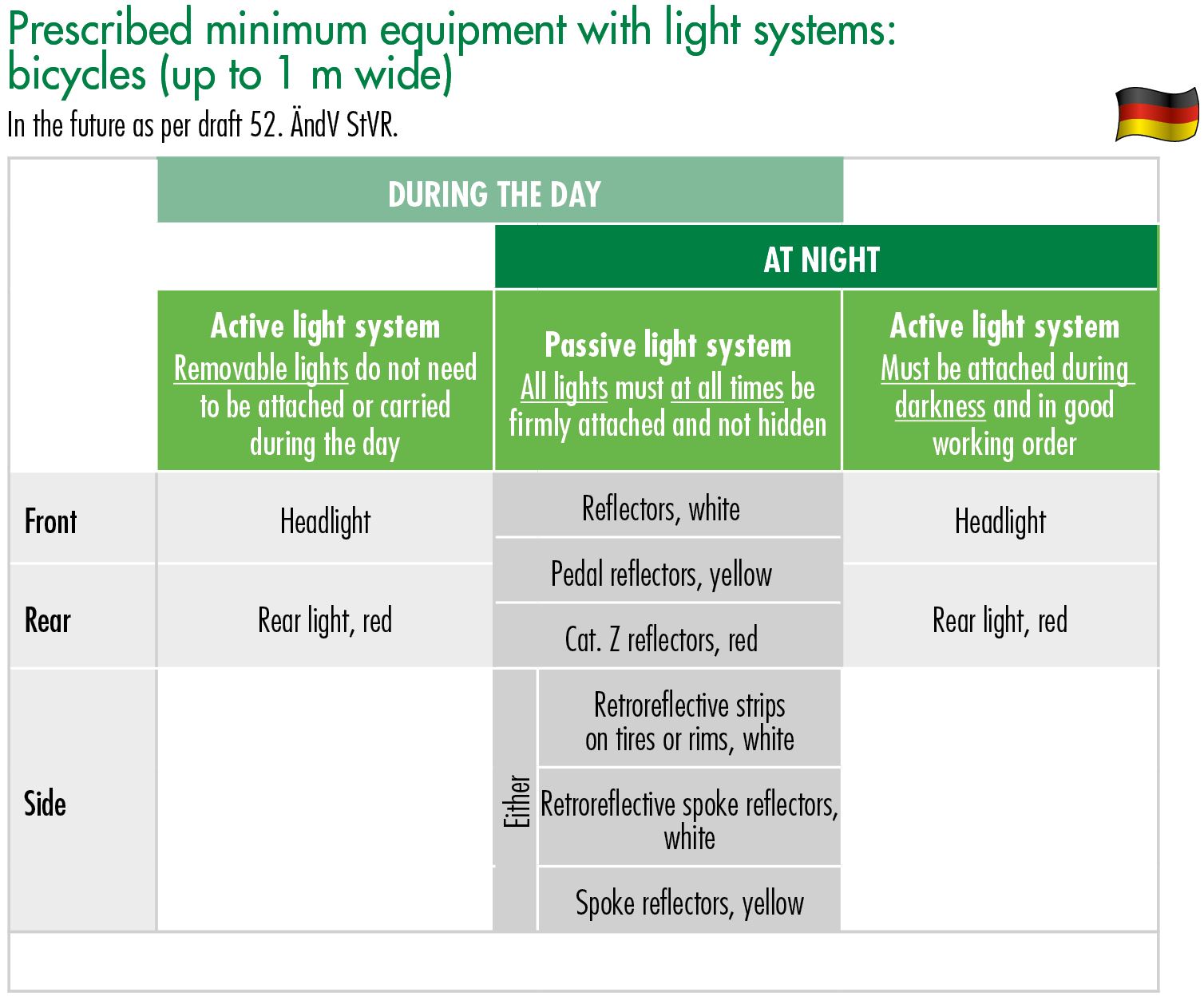Passive lighting systems for unprotected road users
An increasing variety of retroreflective products in various designs and colors is also available for unprotected road users – that is, pedestrians and cyclists – to make them more visible during the dark winter months and when out and about on the roads at night.
For example, shoes and, in particular, outer clothing are already fitted with retroreflective materials by the manufacturers, or special reflective bands and tags can be attached to these. Self-adhesive reflective film is becoming increasingly popular among parents who attach them to children’s bicycles, baby carriages and bags. Even walking frames can be fitted with retroreflective material to make them really safe.
Particularly vulnerable are cyclists, who are frequently forced to join the flow of motor traffic. This is one of the reasons why so much importance is attached to safety systems for bicycles, which are the world’s most popular mode of transport, some of them now also equipped with electric motors. For bicycles, properly functioning lights are vital – and not just during the dark winter months – so that cyclists can not only see well but also be seen at all times. At the beginning of this year, Section 67 of Germany’s road traffic licensing regulations (St- VZO), which covers lights on bicycles, was amended to include Section 67a, which covers lights on cycle trailers. This amendment ascribes cyclists a special sense of responsibility by stating that any active, removable lights – i.e. headlight and rear light – do not need to be attached or carried during the day. At night or when it is dark, however, these lights must be attached and, of course, be in good working order. If a cyclist fails to meet this obligation, whether because they have “forgotten” their removable lights, failed to plan the charging periods properly or it fell dark “suddenly,” passive lighting systems become all the more important. Only when all of the prescribed reflectors and/or retroreflective materials have been firmly attached and are not hidden can they fulfill their function as a potentially life-saving measure.

